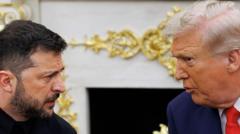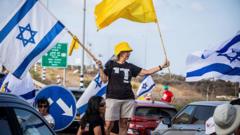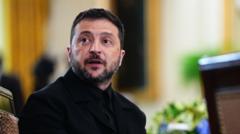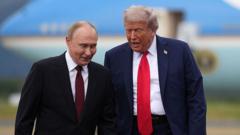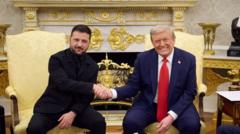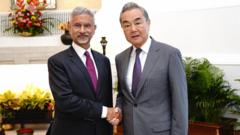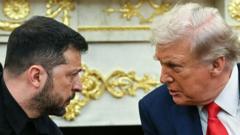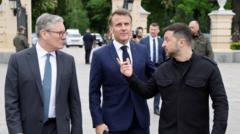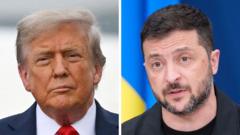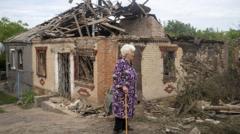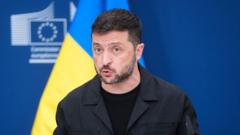Ukrainian soldiers in Sumy contend with relentless drone attacks from Russia, embodying the enduring crisis of the conflict. As they fight using outdated tools, civilians like Margaryta Husakova grapple with profound losses and persistent fear, revealing the human cost of war amidst a beleaguered nation.
"Endless Conflict: Ukrainian Soldiers' Struggle Against Unyielding Drones"
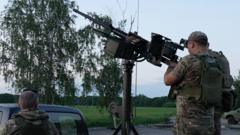
"Endless Conflict: Ukrainian Soldiers' Struggle Against Unyielding Drones"
Ukrainian troops in Sumy face nightly drone assaults, reflecting the ongoing toll of the war in Ukraine, as civilians bear the brunt of devastation and loss.
As dusk falls in Sumy, Ukraine, the night transforms into a battleground where Ukrainian soldiers confront relentless drone attacks from Russia. Each evening, local troops attempt to intercept some 100 Iranian-designed Shahed drones—a modern manifestation of warfare—as they engage with weapons whose designs evoke the last days of World War One.
Amidst the treetops, a small unit emerges, preparing for an unequal fight. Commander Jaeger monitors a screen filled with red dots that signify approaching threats. The troops scramble into action on flatbed trucks, heavy machine guns at the ready, awaiting the enemy overhead. The tension is palpable as the first drones appear, barely distinguishable against the twilight sky, prompting an immediate joint response of tracer fire.
The emotional weight of each near miss is heavy on Jaeger. He acknowledges the hardship of watching drones pass unharmed but emphasizes the need to remain focused. "If it comes in, we engage. If it makes it through, we know others will respond," he reflects. This relentless rhythm of combat has turned his and his men’s lives into a daily cycle of warnings and defenses, reminiscent of "Groundhog Day."
Many of these drones target key Ukrainian locations, including the capital, Kyiv, where a recent wave resulted in civilian casualties, reminding the soldiers of the real cost of warfare. The air raid alerts echo across the city, instilling a grim atmosphere as residents brace for potential disaster. The Ukrainian air force confirms over 300 drones targeted the capital in one night, leading to the devastation of neighborhoods and claiming civilian lives.
In parallel, civilians like Margaryta Husakova recount the harrowing effects of such attacks. Having lost close family members to a drone strike on a bus, she navigates the landscape of grief and fear for her children, who represent her reason to endure. Her haunting description of the attack reflects the sharp contrast between ordinary life and the unpredictability of war.
As the conflict endures, many in Sumy fear that peace is a distant hope. Discussions of ceasefires appear futile, with both Ukrainian and Russian sentiments indicating an extended confrontation. Especially for those like "Student," a battle-hardened soldier, the prospect of a temporary peace brings little comfort; he anticipates a cyclical conflict that may brim back to the forefront within years.
The ongoing war leaves deep scars, both visible and hidden, on soldiers returning to their communities. Strained relationships and fractured lives paint a grim picture of the toll taken on families split apart by conflict. The training that continues among local units emphasizes preparedness for a future laden with uncertainty.
In this ongoing story of hardship, resilience manifests through the unyielding spirit of both soldiers and civilians in Ukraine, as they fight to survive and reclaim a semblance of peace amid chaos.

